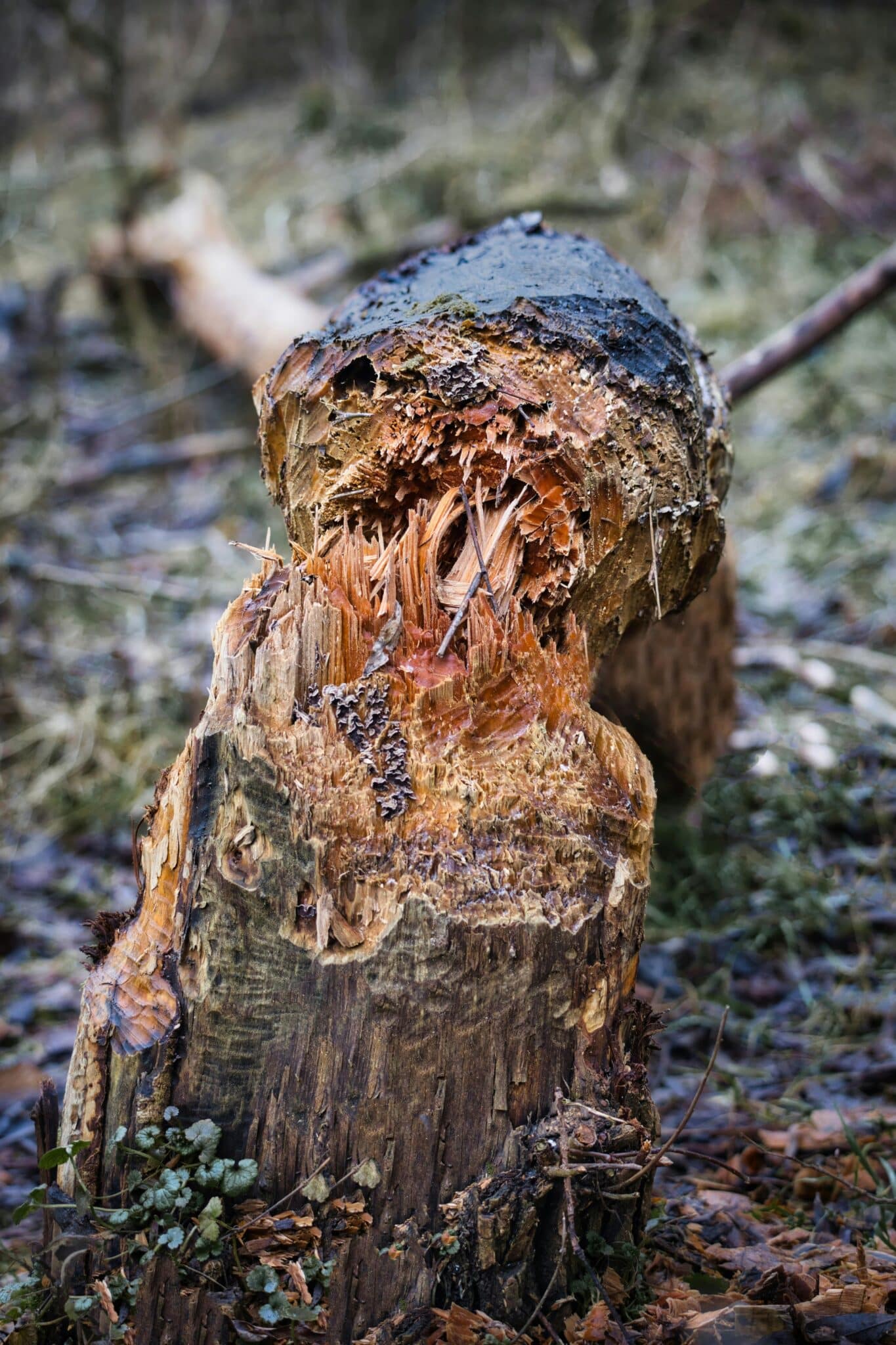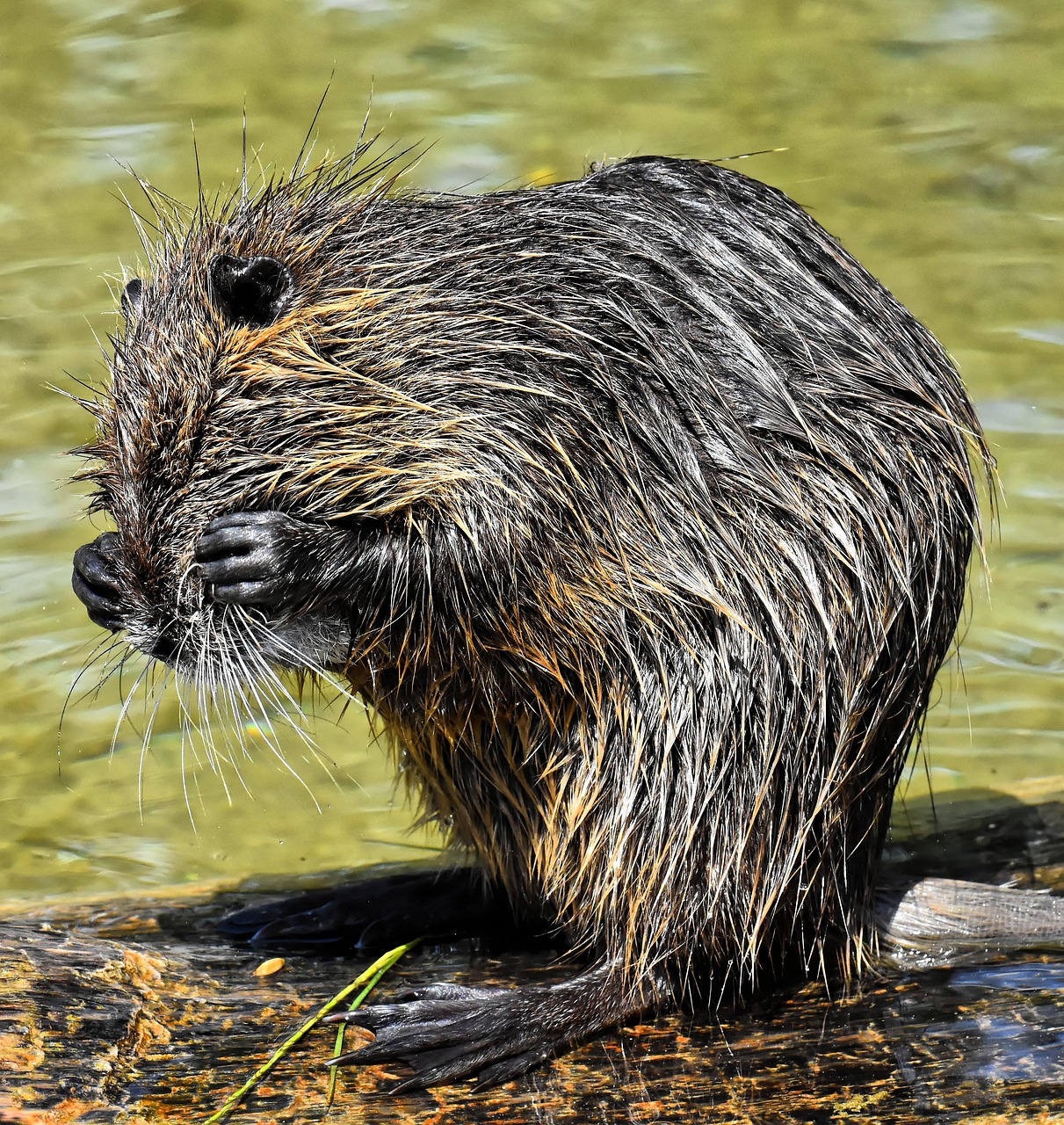Beavers in Northern Virginia: How to Identify, Prevent, and Safely Handle
Beavers are intelligent creatures, known for their ability to reshape landscapes, and they are an established part of Northern Virginia’s ecosystem. But beavers can also cause property damage, including flooding, felling trees, and destroying landscaping. Here’s what you need to know about humanely addressing beavers in Northern Virginia.
Beaver Removal
Expert Wildlife Solutions You Can Trust
Beavers are intelligent creatures that are an established part of the wildlife community in Northern Virginia. They are known for their ability to reshape landscapes with their cleverly engineered dams and lodges.
Beavers can also cause significant problems for your property, such as flooding, knocking down trees, and destroying landscaping. Beavers have been known to fully flood roads, driveways, and yards fields with their construction process. They don’t mind being busy.
Here’s everything you need to know about beavers, including how to identify beaver activity (hopefully before it’s too problematic for you), how to prevent damage to your property, and how Hunt Country Wildlife Control can safely and humanely address beavers in Northern Virginia.
ARTICLE CONTENTS:


Why are Beavers a Problem?
Beavers may seem harmless enough, but their natural instincts to build dams presents plenty of problems.
Beavers love to build dams. They do this to create a home of their own, collecting a deep pool of water behind their dam to allow for a safe underwater entrance that protects them from predators. Beavers also like to store their food underwater for winter, so the entire structure serves them well.
Unfortunately, this process can cause a lot of other issues… and beavers don’t mind ruining your property if it means getting their job done.
Here are the most common issues beavers cause for homeowners.
1. Flooding and Property Damage
Beaver dams block the natural flow of creeks, ponds, and drainage systems. When they decide to build a home near residential properties, the rising water can flood roads, septic systems, basements, and more.
Beavers can also act quickly, sometimes building an established dam in a matter of days. This can cause flooding of several acres overnight, causing thousands in repair costs if ignored. So if you start to notice water levels rising near your home, don’t ignore it.
2. Tree Destruction
Beavers love trees. Unfortunately, they mostly love knocking them down. Beavers will chew through trees to use as building material. Their powerful front teeth can take down even large, established trees in a few hours.
If you have decorative trees in your landscaping (such as fruit or flowering trees) or established hardwoods near a creek or pond, beavers may use them for a dam.
3. Erosion and Landscape Changes
When beavers redirect water flow, they destabilize the soil around your property. This can lead to erosion, property loss, and even collapsed banks or driveways.
Over time, this has been known to change the entire landscape, affecting drainage and the local ecosystem around your home.
4. Damage to Roads and Infrastructure
Beaver dams near culverts or storm drains can create a major issue. When a culvert gets blocked, it quickly backs up stormwater which leads to flooded roads and can begin causing significant structural damage to public or private property.
If you notice pooling water near roadways or driveways after rain, a nearby beaver dam could be the cause.
5. Attracting Other Wildlife
As beavers change the landscape, it tends to attract other visitors. Standing water and newly created wetlands attract pests and animals such as snakes and mosquitoes. Over time, this can begin introducing new pest issues.
Identifying Beaver Behavior
It’s not very common to catch a sighting of a beaver. They are primarily nocturnal and crepuscular, meaning they are most active during the night and at dawn and dusk. However, there are plenty of signs that give them away.
Here are some to look for…
- Freshly gnawed tree stumps (especially near water)
- Trees with a distinctive cone-shaped cut at the base
- Mud mounds or piles of sticks near the water’s edge (possible lodges or dams)
- Flooding or slow-moving water where water used to flow freely
- Drag marks from branches or logs leading into the water
- Sudden appearance of small ponds or flooded areas
Remember, you may never see the beavers themselves. But if you see any of these signs, it’s enough evidence to take action. Beavers love expanding their territory, so the longer they stay, the harder (and more expensive) addressing them becomes.

Effective Beaver Prevention
Beavers are highly persistent and strong-willed animals. Preventing them takes planning, consistency, and sometimes professional intervention.
Keep in mind that trapping and moving beavers to another area is illegal in the state of Virginia without the proper permits. Never attempt to trap and relocate a beaver.
Here are four prevention strategies that help:
1. Protect Trees with Barriers
Wrap the base of your trees with hardware cloth or welded wire (at least 3 feet high). This helps prevent beavers from gnawing through the bark and will protect your trees.
2. Manage Water Flow
Managing water flow will help reduce property damage. Work with pond levelers or beaver pipes to maintain a normal, safe water level and prevent flooding. These can also discourage beavers from rebuilding their dams.
3. Remove Attractants
Beavers tend to be attracted to food sources like grasses, leaves, and aquatic plants (cattails, bulrushes, water lilies, etc.). They also like the bark of aspen, cottonwood, willow, and alder trees.
Make your area less attractive by removing foods they like. You should also get rid of any housing materials that might be easy for them to use, such as fallen trees, broken branches, and excess vegetation near streams.
4. Call a Professional
If you already have active beaver dams, clear beaver activity, or flooding, DIY methods won’t cut it. You’ll need a professional to ensure the animals are handled humanely and the problem is addressed at the source.
Hunt Country Wildlife Control is trained to manage beaver populations and damage safely, effectively, and legally. Call us to help with your beaver wildlife control.

Our Beaver Removal Process
At Hunt Country Wildlife Control, we provide professional, humane beaver control services throughout Loudoun and Fairfax Counties.
We understand how destructive beavers can be when they alter waterways, flood properties, and damage trees. Our team uses proven, environmentally responsible methods to address them and restore your property to its natural balance.
Whether you’re dealing with a dam, a flooded area, or active tree damage, we’ll identify the issue, control it, and prevent future damages.
1. Detailed Property Inspection
We start with a full site evaluation to locate dams, lodges, feeding areas, and damage zones. We also assess the water level and flow patterns to determine how the beavers are impacting your property.
2. Customized Management Plan
Each situation is different with beaver activity. We will design a plan based on your property’s terrain, water system, and the size of your beaver colony.
3. Humane Plan Implementation
Depending on your site review, we will begin implementing safe beaver control, water management, and restoration of normal water flow to keep your property safe.
4. Long-Term Monitoring
We follow up with property checks to ensure beavers haven’t ruined your property or created bigger issues. We will make sure our wildlife control measures keep your property safe.
Areas Served
Areas We Service for Beaver Removal
Hunt Country Wildlife Control provides humane beaver control and water management services throughout Northern Virginia, including both residential and commercial properties.
We proudly serve:
Loudoun County:
- Purcellville
- Round Hill
- Leesburg
- Hamilton
- South Riding
- Ashburn
- Sterling
- Middleburg
Fairfax County:
- McLean
- Arlington
- Alexandria
If you’re seeing flooding or damage caused by beavers in any of these areas, our team will help restore your property safely and quickly.
How do you get rid of beavers humanely?
The most effective way is through humane trapping (where permitted), followed by dam removal and flow control devices to prevent re-damming. Always contact a licensed professional to ensure safe and legal removal.
What keeps beavers away from your property?
Protecting trees, maintaining strong water flow, and eliminating easy food sources are your best defenses. Installing flow devices can help prevent dams from reforming.
Can you remove a beaver dam yourself?
No, it is not recommended. Beavers rebuild quickly, and dam removal without addressing the beavers themselves only creates temporary relief (while possibly harming the beaver).
Always work with a professional to ensure the dam, animals, and attractants are handled effectively and humanely.
Why are beavers attracted to my property?
Beavers like sources of water that they can make deeper. They also like to eat grasses, leaves, and aquatic plants like cattails, bulrushes, and water lilies. Streams, ponds, and low-lying areas with trees are ideal for them to build and feed.
Call now for expert wildlife removal and exclusion you can trust.
Don’t wait until a small problem becomes a big one. Call now and get the peace of mind you deserve.
